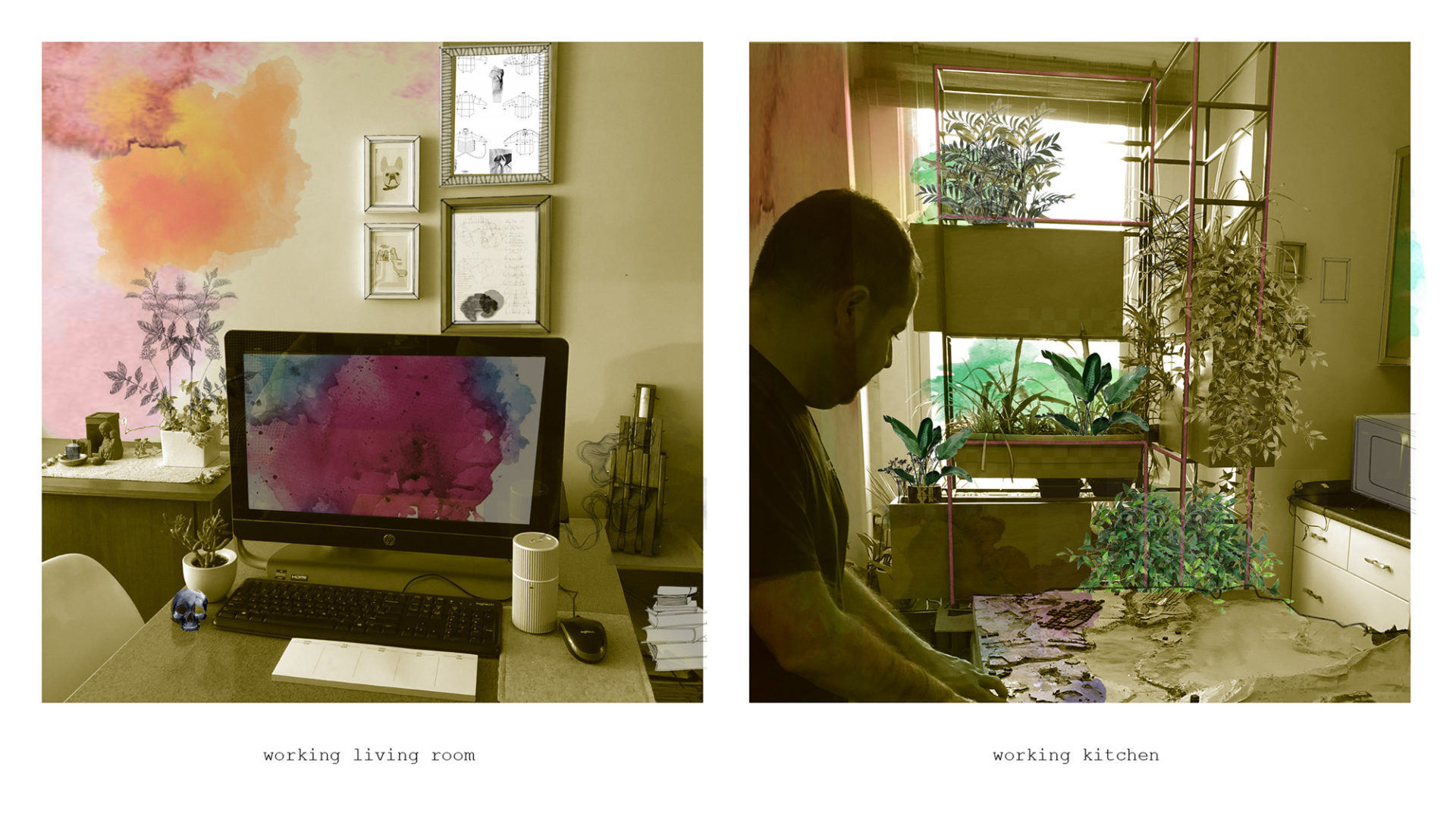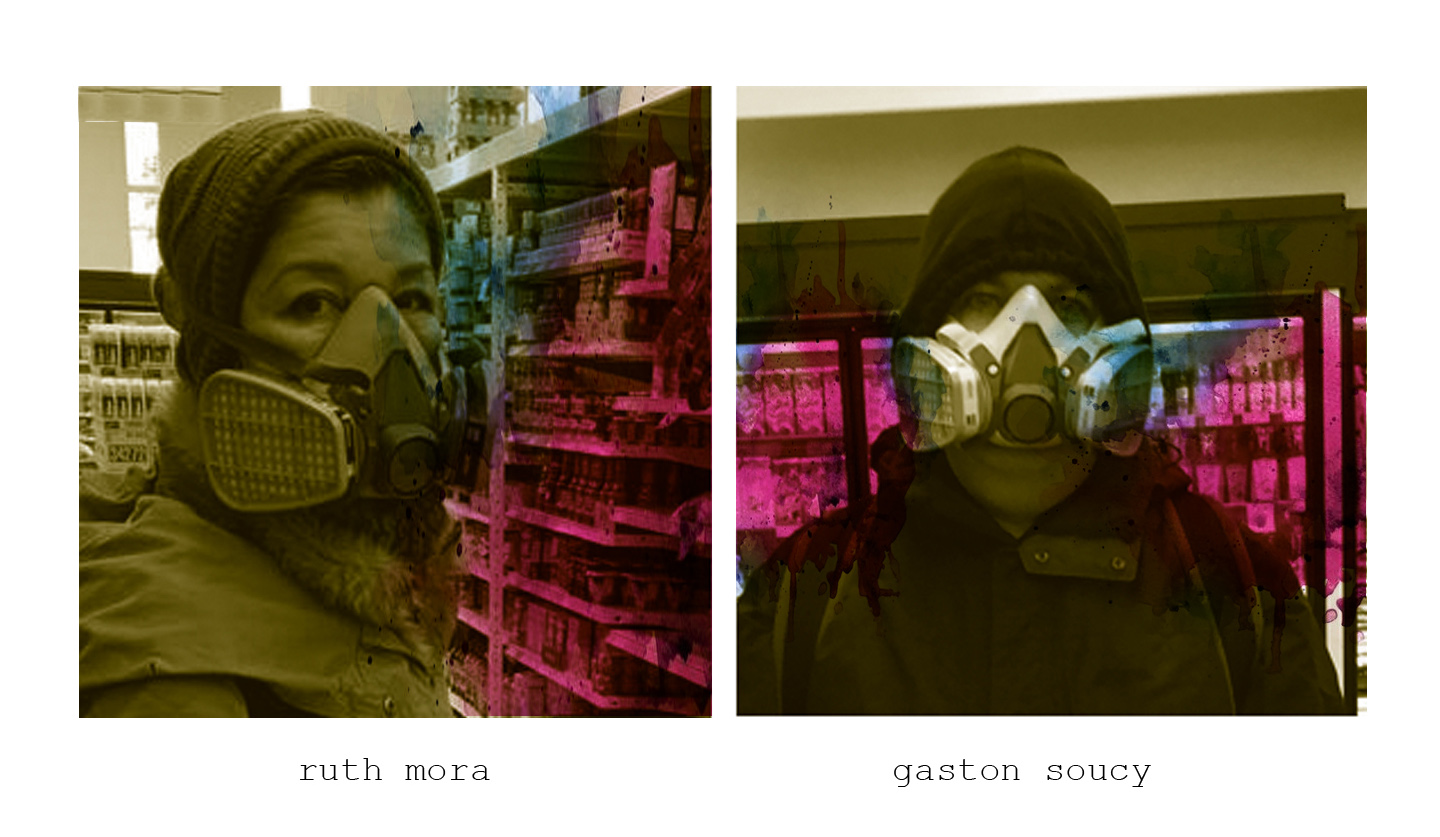

As individuals and organizations take on proper physical distancing measures due to the COVID-19 pandemic, many of us have found ourselves spending more time at home for many reasons. What was once a common place to eat, sleep, and unwind, our homes also double as remote workspaces for those of us that have the option of working from home. With this significant change, we need to adapt to become more flexible with how we use our homes. We’re asking people in our community to share their work from home (WFH) spaces, routines, and coping mechanisms.
Name
SUMO Project, Ruth Mora and Gaston Soucy
What is your profession?
We are artists, architects, urban designers and survivalists.

Tell us about your workspace.
Work has taken over most of the place, especially the kitchen and living rooms, which are the most versatile of spaces. But basically, every space in the house has been hyphenated with the word “work.” Our practice demands experimentation at different scales, in different mediums, different sites, in different themes; we also do a lot of writing so there is no space that is not used for one thing or another, including the bedroom. This has blended well with our way of life as the entire place has always been filled with inspiration based on an eclectic collection of books, art and rare objects that adorn walls and shelves throughout the house. So, looking around has always been a source for ideas and motivation, which is now nicely complemented in a symbiotic, but sometimes chaotic, live-work environment.
What are some important aspects of your WFH space?
We’ve taken the live-work concept to a very literal level. Most of the spaces have been adapted for work: work-kitchen, work-living room, work-bedroom. That way, depending on the activity, time, and mood you can pick an environment that suits what you’re doing. When the work is messy, the kitchen and washroom take the brunt of it. The important thing is that at the end of the day they go back to being organized (within reason).
On a lighter note, music, cooking and sunlight are key elements to staying happy. Outdoor walks are a must when the weather cooperates. Good food is also part of a happy day, so balancing the work-kitchen has probably been the most challenging of tasks. Good coffee is essential (!), and with that comes home baked bread and biscuits.
Do you have a WFH routine or tips?
Morning: wake up, coffee (for survival), exercise, quick shower, breakfast, check emails and messages, listen to CBC news and BBC news while having more coffee (for pleasure), work, depending on the activity listen to music or a podcast (e.g. 99% invisible, history idol).
Afternoon: lunch, more work (calls, sketching, drafting, art).
Evening: walk or run, another quick shower and reading or a movie on Kanopy or Netflix.
Weekends are for art, reading, housekeeping – including cooking and/or baking – and catching up with sleep.
Do you have any WFH coping tips?
When you look around and read the world news, then it’s easy to realize that we are fortunate to be where we are. As such, we all must do our part to help by following the rules and using common sense. It is what it is. But one thing that this is not is normal. We don’t like saying “the new normal” because this is not, and should never be, normal. It will end, and we look forward to it doing so.
These temporary limitations have reminded us of how we took so many things for granted. Everything that was mundane is all of a sudden special: being outside, going to the movies, eating gelato, hugging a friend, dining out. It is with this new appreciation for life that we look forward to doing these things again soon.

When times are tough, gratitude is an integral part of keeping balanced. What are the things you are grateful for?
Our upbringing.
Being in Canada.
Being healthy, both physically and mentally.
Talking to our friends and family.
Spring and the sunnier days that come with it.
Our plants.
Gelato, which we should also learn to make at home.
Sending and receiving love right now is important. How are you expressing your love for the people in your life?
COVID or not, we’ve always shown affection through the simplest of gestures. Being immigrants, long distance affection is not a strange thing to us, so WhatsApp calls or Zoom meetings have always been part of our lives. With COVID this has intensified and spread to every aspect of our lives, so we’ve added additional items to our affection and communication repertoire such as sending a postcard and/or Instacart treats to the elders and our closest friends. And as the weather improves, doing local deliveries of home-baked goods has also been a great excuse to have curb to front porch visits with our local friends and family, to personally show our affection and see their faces not through a screen for a change.
––
*Are you working from home? Want to share your WFH space, routine, or coping mechanism? We’d love to hear from you.





























